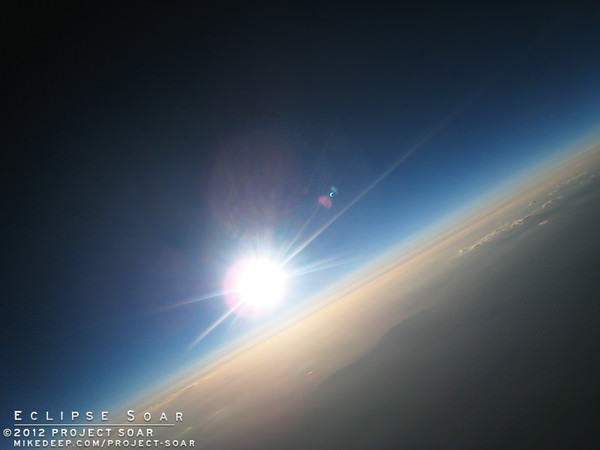[/caption]
During the May 20 annular eclipse, two teams sent a duo of high altitude balloons to simultaneously capture the event, and they got some amazing pictures. Not only did the two imaging systems on the balloons take pictures of the eclipse, but they also took pictures of each other, with both balloons near the edge of space. “Our goal was to launch 2 capsules to the edge of space to shoot photos and high-definition videos during the annular solar eclipse,” David Gonzales of Project Soar told Universe Today.
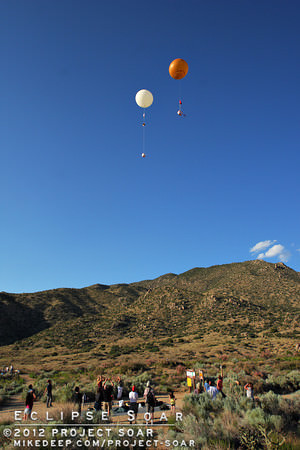
Project Soar has sent seven balloon launches with their reusable PURSUIT capsule to take images of Earth and space. They teamed up with Larry Grater who sent his North Texas Near Space capsule NTNS-1 on its maiden flight.
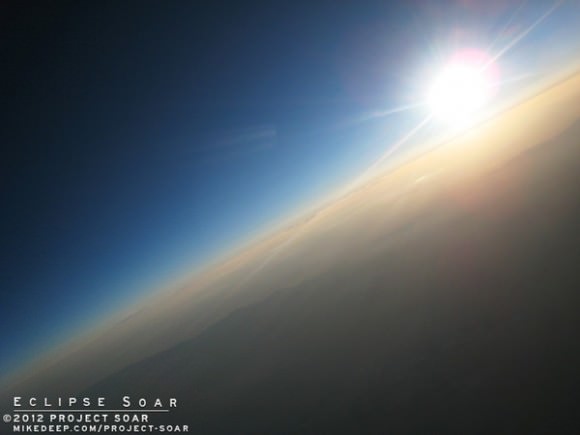
“In several of the images, you can see NTNS-1 under its balloon as shot from PURSUIT against a pitch black sky,” Gonzales said via email. “Despite the sun being high in the sky during the flights, you can see how dark the ground got in some of the images due to sun being mostly covered by our moon. Unlike a total eclipse though, there is no obvious dark spot as the transition between full annular and partial eclipse around the center-line is very gradual and not as sharp as in a total eclipse.”
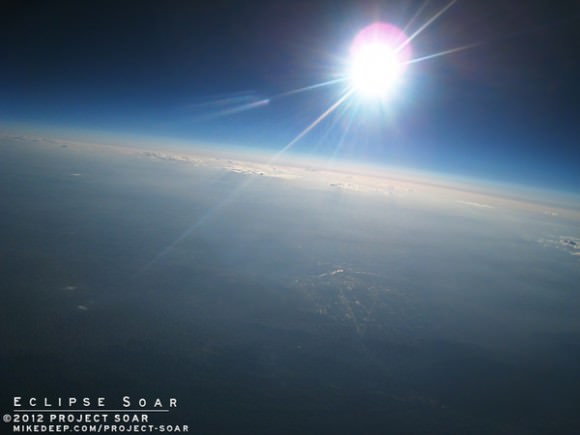
Also visible is the eclipse in various stages as Sun-shaped lens flare in many the images.

The launch sites were chosen just hours before launch to ensure the trajectories would stay on the center-line for the eclipse and avoid overflying any restricted airspace, Gonzales said.
“We had a particularly challenging countdown as 2 balloons had to be filled with Hydrogen for a very narrow launch window,” he said.
Both capsules took to the skies on time from an East Albuquerque hiking park, and then had to immediately clear the Sandia mountains right after liftoff before continuing their journeys to the edge of space. As the team and other onlookers enjoyed the annular eclipse from the ground, the two balloons shot photos and videos from near space.
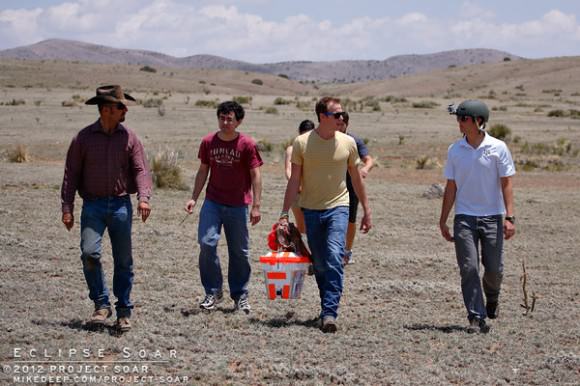
Both capsules landed just after sunset and were recovered. For more great images, see the Project Soar “Eclipse Soar” page.
Here’s a compilation of the HD video that was shot, with an amazing view of the PURSUIT capsule falling after burst at high altitude (at 8:53). “NTNS-1 caught PURSUIT right after burst in the video,” Gonzales said. “I don’t think I’ve ever seen imagery of a capsule falling after burst at high altitude before.” Other key events in the video are NTNS-1 and PURSUIT close pass at 0:52, the PURSUIT Capsule visible at 7:24, PURSUIT descent at 8:53, NTNS-1 Burst at 11:41
Eclipse Soar was a collaborative effort between Project Soar of San Antonio and North Texas Near Space of Dallas.

